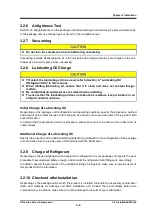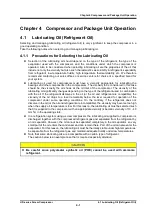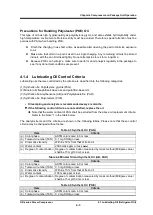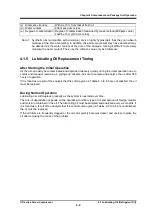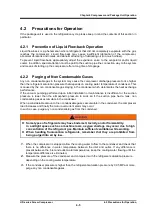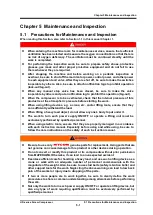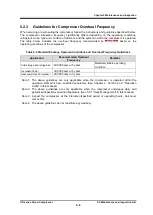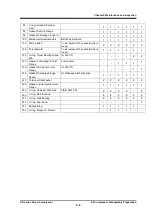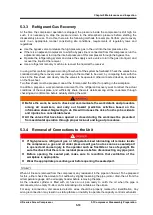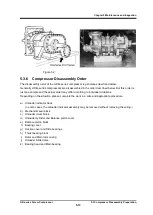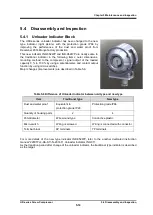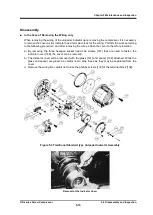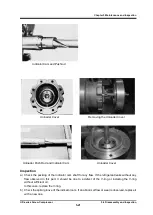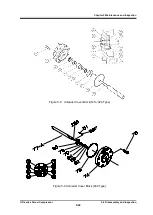
Chapter 5 Maintenance and Inspection
UD-series Screw Compressor
5.3 Compressor Disassembly Preparation
5-7
5.3
Compressor Disassembly Preparation
Although screw compressors are very reliable machines, it is still necessary to perform overhaul to
inspect internal parts after a certain period of operation.
This chapter 5 explains the essential points of disassembly methods, where to inspect on parts, and
reassembly procedure.
In principle, compressor overhaul that require complete disassembly should be performed in the
maintenance factory. If you must do the overhaul work at the installation site due to unavoidable
reasons, use the methods described in the following paragraphs.
However, please note that regular overhaul work requires removal of the compressor from the base
frame. And then, the compressor should be placed on a work bench which has properly size area to
disassembling the compressor.
When moving the compressor from the unit base to the workbench, be sure to follow the instructions
given in Chapter 3, Section 3.1 "General Installation Precautions" and Section 3.2.3 "Transportation" of
this manual.
Carefully read this manual and fully understand the details before starting to work.
Note that some parts name given in the text of this manual is followed by a number enclosed in square
brackets [ ], which indicates the part identification number given in assembly sectional views or parts
configuration table.
5.3.1
Disassembly Tools and Workplace
Prepare all the required tools as mentioned in “ 7.8 Tools for Disassembly" in this manual Chapter 7.
It is also recommended to prepare general hand tools, green silicon carbide grinding stone, emery
paper (#80 - #100), empty paper (#400 to #800) parts cleaning oil, lubrication oil, a lubricator, an oil can
for oil sump, waste cloth and so on
When removing the compressor from the installation flame for an overhaul, foresee enough space on
the workbench to perform the task.
To safely reach the bolts and plugs used on the lower side of the compressor, place the compressor on
an additional frame. Consult article 5.3.5 in this chapter for more information.
Perform the work in a dry place with as little sand, dust or any other contamination as possible.
.


